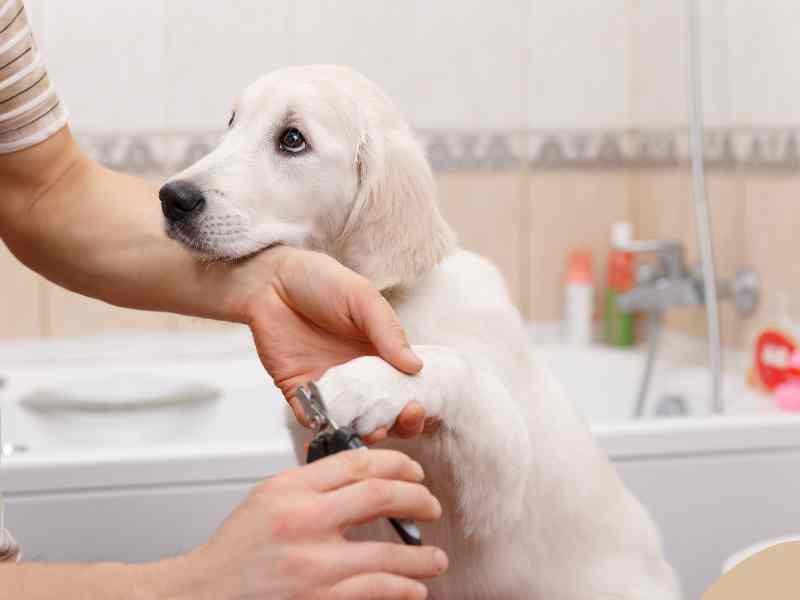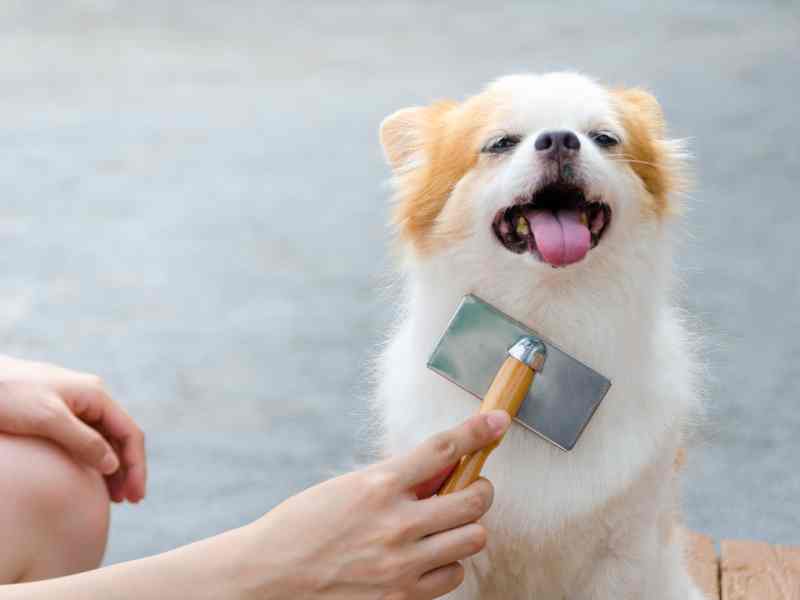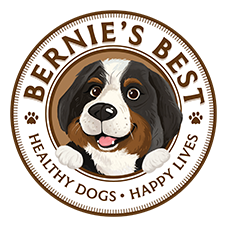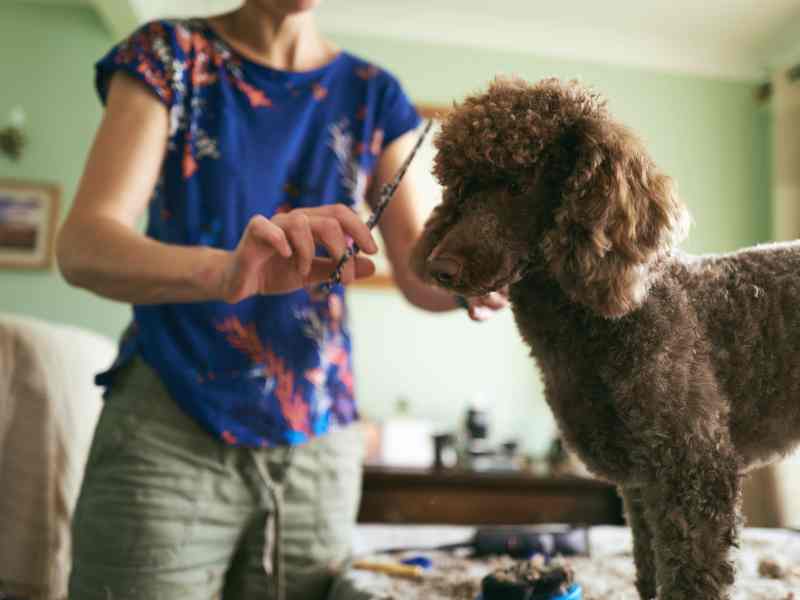Having a dog presents a unique set of joys and responsibilities. One of the biggest is grooming your dog. It goes far beyond keeping them looking their best–it’s also about their health, comfort and quality of life. Grooming at home can be a practical alternative to professional services but also an opportunity to bond with your dog in a relaxed environment. It allows you to personally ensure their comfort and well-being, turning what could be a stressful experience into a calm, bonding activity.
Why Consider Grooming Your Dog At Home?
Beyond the emotional benefits, grooming your dog at home is a smart move financially. It cuts down on regular grooming expenses and allows you to manage your pet’s care on your schedule.
It can help your dog be less anxious about hygiene and confidently care for your dog’s grooming needs at home. Whether you’re tackling tangles or trimming nails, grooming at home can be a good experience for you both.
Regular grooming is far more than a cosmetic routine for your dog; it’s an essential part of their healthcare regimen that plays a crucial role in their overall well-being. There are several benefits to grooming your dog at home:
- Health Monitoring: Each grooming session is an opportunity to check on your dog’s health. It’s a hands-on way to notice any abnormalities early on, like lumps, bumps, or signs of infections that might otherwise go unnoticed. Early detection can lead to quicker diagnoses and treatments, potentially saving your dog from discomfort and more serious health issues down the line.
- Skin and Coat Health: Regular brushing and bathing help distribute natural oils throughout your dog’s coat, keeping their skin hydrated and their fur smooth and shiny. This routine also helps to remove dead hair and skin cells, reducing shedding and preventing matting—a condition that can lead to skin infections and pain. Just like it’s important for exfoliating our own human bodies, dogs benefit too.
- Bonding Time: Beyond the physical benefits, grooming sessions can strengthen the bond between you and your pet. It’s an opportunity for you to connect, communicate, and show care in a very direct and tangible way. Our dogs thrive on attention and affection, and grooming gives them that while also giving us a sense of caring for them.
- Preventing Discomfort: Long nails can affect your dog’s gait, leading to discomfort and, over time, joint issues. Similarly, unbrushed fur can become matted or tangled, pulling on the skin and causing pain. Regular grooming prevents these issues before they become a problem, making sure your dog remains comfortable and happy.
Grooming is a cornerstone of pet parenting. When you integrate regular grooming sessions into your dog’s routine, you’re not just caring for their physical appearance but investing in their health and happiness.
How Can I Set Up A Home Dog Grooming Station?
A well-thought-out grooming station with the right dog grooming equipment makes the grooming process smoother and makes sure it’s a stress-free experience for you and your pet. Here are some tips on how to create an efficient and comfortable grooming space at home:
Choose the Right Location
- Comfort and Space: Select an area that’s comfortable for you and your dog, ideally a place with floors that are easy to clean. Think tile or vinyl. Make sure there’s enough space for your dog to stand, sit, and turn around comfortably and for you to move around them easily.
- Lighting: Good lighting is super important. Natural light is ideal, but if that’s not possible, bright artificial lighting will help you see clearly, and help you not to miss things.
- Accessibility: Consider the accessibility of water for bathing. A bathroom or a utility room with a sink or tub that fits your dog’s size is ideal. For larger breeds, an outdoor space with a hose might be more suitable during warmer months. You’ll need access to a good amount of easy access to water; so try to be as close as possible to that source.
Essential Grooming Tools and Products
Investing in quality grooming tools and products is essential for the safety and comfort of your dog. Here’s a basic checklist of tools professional grooming services always have on hand:
- Brushes and Combs: You’ll need an appropriate dog brush and combs depending on your dog’s coat type. A slicker dog brush works well for most breeds, while a de-shedding tool is a must for those with double coats.
- Nail Clippers or Grinder: Choose a style you’re comfortable handling. Clippers work well for precise cuts, while a grinder or dremel tool can smooth out the nails but you may need to help your dog get used to it first.
- Dog Shampoo and Conditioner: Only use products formulated specifically for dogs, considering any skin conditions or sensitivities. Natural, hypoallergenic options are great for dogs with sensitive skin. Remember these products will be around your dog’s face, so you’ll want to make sure they’re safe.
- Ear Cleaning Solution and Cotton Balls: Regular ear cleaning is important to ward off infection, especially for breeds prone to ear infections. Use a vet-recommended solution, and keep the ears as dry as you can after grooming.
- Dental Care Kit: This includes dog-specific toothpaste and a toothbrush. Dental health is as crucial as coat and nail care. Charming Chompers are a great way to help your dog’s oral health from the inside out.
- Towels and a Hairdryer: Absorbent towels and a low-heat hair dryer can make post-bath drying quicker and less stressful. You’ll want dogs prone to hot spots or yeast infections as dry as possible, especially for dogs prone to hot spots or yeast infections.
- Grooming Table (Optional): For those with larger dogs or those who groom frequently, a grooming table is honestly a back-saving investment. It provides a secure, elevated surface for grooming services.
Safety First
- Always prioritize your dog’s comfort and safety. Introduce grooming tools gradually, and allow your dog to sniff and become familiar with them before use.
- Keep sessions short and positive, especially when starting out, to build a positive association with grooming. The more they get used to it, the easier it’ll be.
Setting up your home grooming station with the right tools and in the right location not only simplifies the grooming process but also transforms it into an enjoyable bonding activity. With everything you need at hand, grooming becomes less of a chore for you both, and more of a way to make sure your dog’s looking and feeling great.
Step-by-Step Grooming Techniques
Regular brushing is essential for maintaining a healthy coat and skin, removing dead hair, and distributing natural oils across your dog’s fur. The frequency and tools required can vary greatly depending on the breed. Long-haired breeds may need daily brushing to prevent mats and tangles, while short-haired breeds might only need it weekly.
Tips for a Positive Brushing Experience:
- Start brushing sessions when your dog is calm and relaxed.
- Use the type of brush suitable for your dog’s coat, and be gentle to avoid scratching the skin.
- Praise and reward your dog to associate brushing with positive experiences.
- Pay special attention to areas that are prone to tangling, such as behind the ears and under the legs.
Bathing helps keep your dog’s skin clean and healthy, but overbathing can strip natural oils from the skin, leading to dryness and irritation. The right bathing frequency depends on your dog’s breed, coat type, and lifestyle; some dogs may need monthly (or more often) baths, while others are fine with less frequent washing.
Safe Bathing Process:
- Use lukewarm water and dog-specific shampoo that matches your dog’s skin needs.
- Gently massage the shampoo into the coat, avoiding the eyes and ears.
- Rinse thoroughly to prevent irritation from shampoo residue.
- Dry your dog thoroughly with towels or a low-heat hair dryer, keeping the dryer at a safe distance to avoid burns. Pay special attention to the floppy dog’s ears.
Trimming your dog’s nails is vital for their comfort and health. Overgrown nails can cause pain and lead to walking difficulties.
Guide to Nail Trimming:
- Use specially designed dog nail clippers or a grinder.
- Clip only the tips of the nails, avoiding the quick (the pink part containing blood vessels).
- If your dog’s nails are black and you can’t see the quick, clip small amounts at a time.
- Reward your dog after trimming to build positive associations. The more comfortable they are, the easier it gets for your furry friend and you.
Ear checks and cleanings should be part of your regular grooming routine to prevent infections, especially in breeds with floppy ears. Dental care is equally important to prevent gum disease and tooth loss.
Ear Cleaning:
- Use a vet-recommended, natural ear-cleaning solution.
- Apply the solution to a cotton ball and gently clean the outer ear, avoiding deep insertion into the ear canal.
Dental Hygiene:
- Introduce a dog-specific toothbrush and toothpaste gradually.
- Brush your dog’s teeth gently, focusing on the outer surfaces where plaque tends to accumulate.
- Make dental care a regular part of your grooming routine, aiming for several times a week. An easy way to supplement good oral health for dogs is by giving them Charming Chompers each day.
Overcoming Challenges in Home Grooming
Home grooming can present various challenges, though, especially for new pet parents or those with particularly nervous dogs. Understanding these challenges and knowing how to address them can transform grooming from a scary job into an enjoyable and bonding activity.
Handling Nervous Dogs: Many dogs may feel anxious or scared during grooming sessions due to unfamiliar sounds, sensations, or past negative experiences. Here are some ways you can help battle that.
- Familiarization: Slowly introduce your dog to grooming tools and sessions. Let them sniff the tools and hear the sounds from a distance before using them. Do this without ever having any intention of using the tools so they’re familiar when you’re ready.
- Positive Reinforcement: Use treats and praise to create positive associations with grooming. Reward calm behavior and take breaks as needed.
- Comfort and Security: Keep grooming sessions short initially. Groom in a quiet, comfortable space where your dog feels safe. It’s okay if it doesn’t end up being a full groom at first.
Dealing with Matted Fur: Mats can be painful for dogs and challenging for owners to remove. They often require patience and the right technique to resolve without causing discomfort.
- Preventive Brushing: Regular brushing is key to preventing mats from forming, especially in long-haired breeds.
- Detangling Solutions: Use a detangling spray or conditioner to help loosen mats. Gently work on mats with an appropriate comb or brush, holding the base of the mat to avoid pulling the skin.
- Professional Assistance: If mats are too tight or close to the skin, consider seeking help from a professional groomer to avoid hurting your dog. Sometimes it’s worth taking your dog to a full-service salon if the mats are too bad to prevent further damage or traumatization.
Overcoming Bath Time Resistance: Some dogs may resist or feel stressed during bath time, making it difficult for owners to keep them clean.
- Gradual Introduction: Slowly acclimate your dog to bath time by starting with just placing them in a dry tub, preferably with treats, then gradually adding water in subsequent sessions.
- Non-Slip Surfaces: Use a non-slip mat in the tub to give your dog stability. The more stable they feel, the less they’ll stress.
- Warm Water and Quick Drying: Ensure the water is comfortably warm and not hot. After bathing, quickly towel dry or use a low-heat hair dryer to keep them from getting cold.
Trimming Nails Without Fear: Many dogs dislike having their paws handled, making nail trimming challenging. Using a tool with noise can make that worse. Be careful and follow these tips:
- Paw Handling: Regularly handle your dog’s paws gently to get them used to the sensation. The more you play with them, the less it’ll stress them when you want to groom.
- Gradual Introduction: Introduce the nail clippers or grinder gradually, allowing your dog to investigate them before use.
- Quick and Careful Trimming: Trim small bits of the nail at a time to avoid cutting the quick, and praise your dog throughout the process.
Remember, it’s okay if you’re not a pro at first. The point is you’re there, doing your best for your furry best friend, learning as you go. The benefits, like saving a bit of cash, having a flexible schedule, and most importantly, building a stronger bond with your dog, are totally worth it. The goal is to make grooming a positive experience, reinforcing the bond between you and your dog. If certain tasks are too scary, there’s no harm in turning to professionals for help, especially for tasks like dealing with severe matting or nail trimming, which can be intimidating for both you and your dog.


